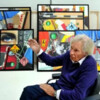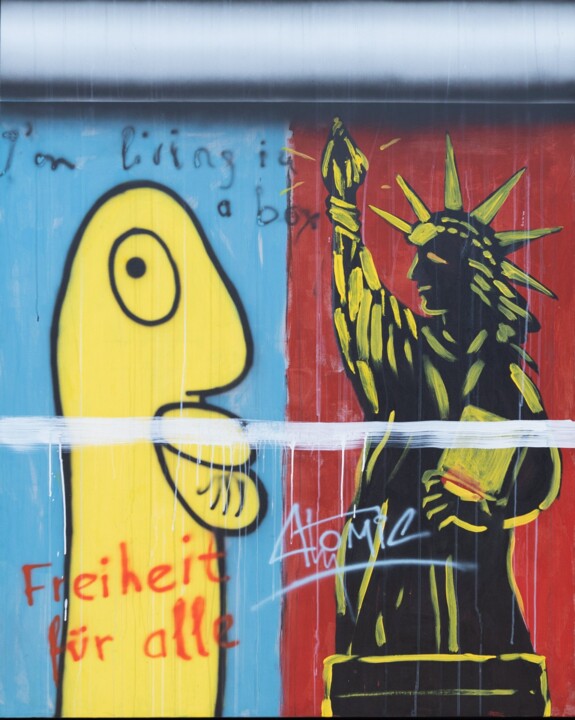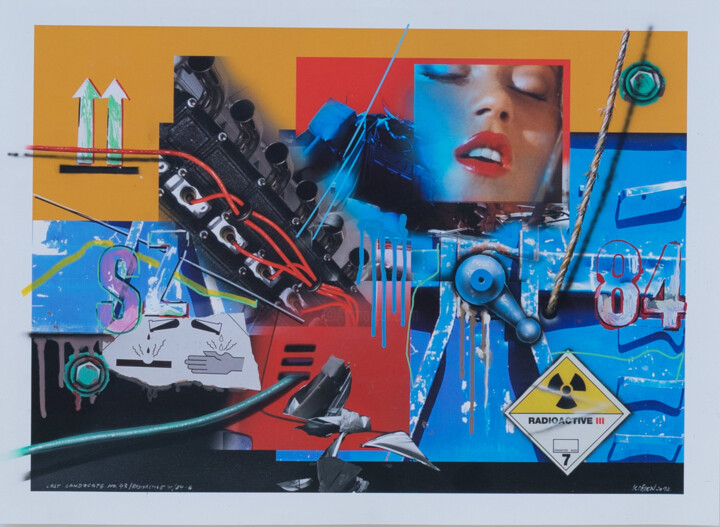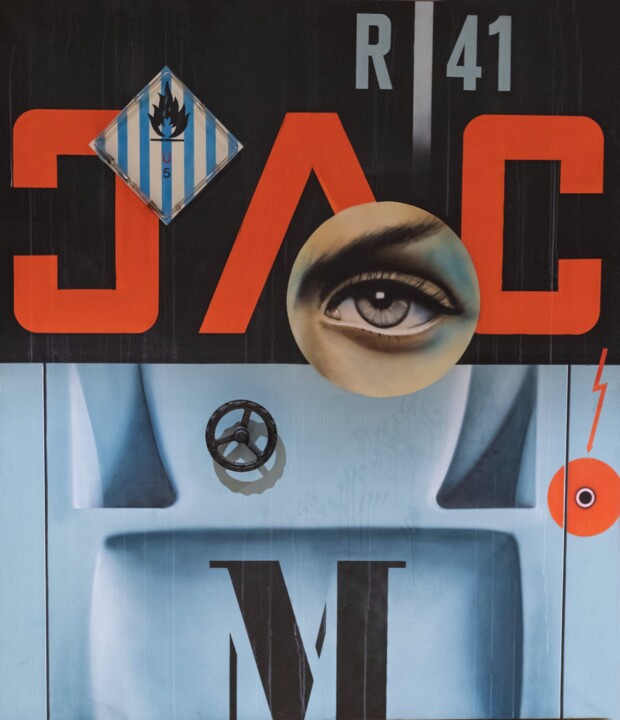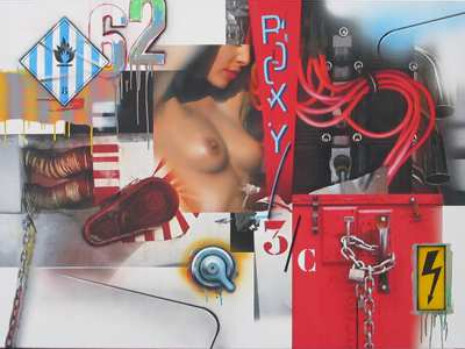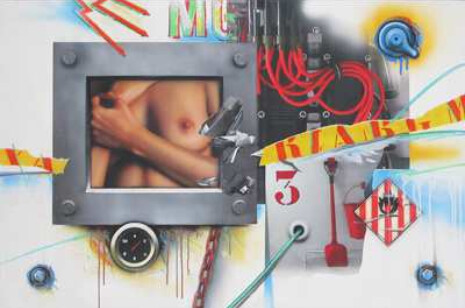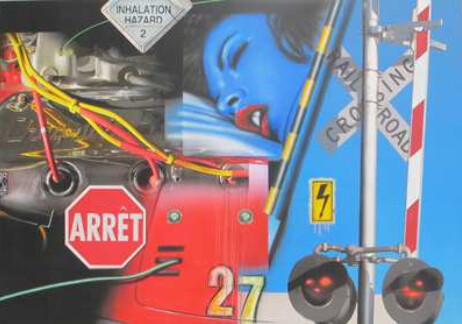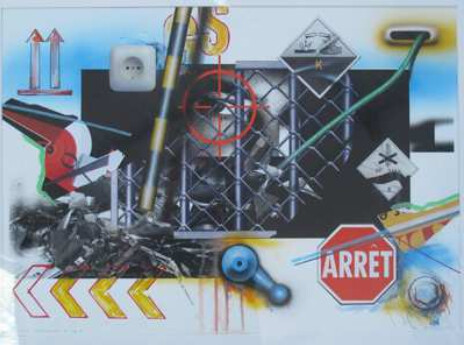Peter Klasen
Peter Klasen is a renowned contemporary German painter and photographer, recognized for his significant contributions to the European Pop Art movement. Born in Lübeck, Germany, in 1935, Klasen has made a notable impact in the art world through his unique approach to painting and mixed media, often exploring themes related to industrialization, urban environments, and the interplay between technology and human experience.
Growing up in a family sensitive to the arts, Klasen was influenced by his uncle, Karl Christian Klasen, a student of Otto Dix and an expressionist painter, and his grandfather, a philanthropist and art collector who introduced him to many artists. Klasen began drawing and painting at a very young age, learning techniques of lithography and airbrushing.
Klasen's formal art education began at the School of Fine Arts in Berlin, the most avant-garde institution in Germany at the time. The school was known for its innovative approach, featuring young teachers like Hann Trier, who were trained in the Bauhaus and German Expressionist traditions. Under the guidance of Will Grohmann, Hans Richter, and Karl Schmidt-Rottliff, Klasen was exposed to diverse artistic styles and techniques that shaped his own artistic vision.
In 1959, he was awarded a scholarship, allowing him to move to Paris. The city became his home and a major influence on his work. Peter Klasen quickly became one of the leading figures in the Narrative Figuration movement, alongside artists like Adami and Erró, and is recognized as a founder of this new wave of figurative art that sought to reinvigorate the value of representation. This movement aimed to critique consumer culture rather than celebrate it, distinguishing itself from the approach of artists like Andy Warhol.
Klasen develops a unique visual language in which he explores and reinterprets the signs of our urban environment and society. Passionate about the images promoted by mass media, he uses pictorial metaphors to critique the uniformity of Western life. His art is distinct, colorful, and accessible to a wide audience. After facing some challenging years, he achieved success in the 1970s.
 Peter Klasen - Lost Landscape n°47 / Explosive, (2012).
Peter Klasen - Lost Landscape n°47 / Explosive, (2012).
A hallmark of Peter Klasen's work is his incorporation of imagery from the industrial world. His paintings frequently feature elements such as machinery, warning signs, and urban landscapes, rendered with a meticulous attention to detail and a bold use of color. Klasen's art often juxtaposes these elements with human figures, creating a dialogue between man and machine that reflects both fascination and critique.
In addition to painting, Klasen has made significant contributions to photography and mixed media art. His photographic works often mirror the themes present in his paintings, capturing the stark beauty of industrial and urban scenes. Through his use of mixed media, Klasen has been able to experiment with different textures and materials, adding a tactile dimension to his visual narratives.
Throughout his career, Peter Klasen has exhibited his work in numerous galleries and museums around the world. His art has been featured in solo and group exhibitions in Europe, North America, and Asia, earning him international acclaim. His works are included in the collections of prestigious institutions such as The Museum of Modern Art in New York, the Victoria and Albert Museum in London, and the Centre Georges Pompidou in Paris. Additionally, his works are represented in over 60 museums and public collections worldwide.
Klasen's work has also been the subject of extensive scholarly analysis, with critics and art historians examining his contributions to contemporary art and his unique perspective on the relationship between humanity and the industrialized world. His ability to merge technical precision with emotional depth has solidified his reputation as a leading figure in modern art.
Peter Klasen continues to create and exhibit new works, maintaining his relevance and influence in the contemporary art scene. His legacy is marked by a relentless exploration of the modern world's complexities and a profound engagement with the visual and cultural landscapes of industrialization.
Mastering contrasts: the dynamic work of Peter Klasen
Peter Klasen creates images, paintings, and graphic works to provoke a critical reflection on the world around us. He balances the sensual with the industrial, the pleasing with the repulsive, and light with darkness, highlighting the ambiguity of human situations for viewers. His art navigates the space between art and life, focusing on the paradoxes and hyper-reality of objects that represent the most fundamental aspects of existence. Klasen works on a variety of surfaces, including linen canvases, iron, sheet metal, and wood.
From the beginning of the 1960s onward, Klasen created his own painting style and vocabulary. His art became clashing and dazzling, using signs such as nuts, chains and levers, tarpaulins, grids, iron doors, meters, and road signs. His craft also lies in the skillful organization of these symbols over the canvas, among fragmented bodies—often eyes, mouths, or breasts. In short, he sought to recreate his encounter with the blind and devastating power of an omnipresent machine.
Klasen's work is marked by industrial themes, often juxtaposing images of industrial objects like pressure gauges and hydraulic circuits with sexually charged images of nude women. These juxtapositions are the means by which he confronts themes of confinement, political control, and fear. Industrial elements such as pressure gauges, metal locks, tarpaulin sheets, and hoses for hydraulic circuits are prominent in his paintings, alongside logos, numbers, and images from magazines or posters.
Peter Klasen creates a balance between the sensual and the industrial, a cross-fertilization between the agreeable and the disgusting, the tasteful and the abhorrent. This contradiction is often expressed in his pictures. In addition to paintings on linen canvas, iron, sheet metal, and wood, he has created several public works, including decorations for part of the La Défense business district in Paris.
 Peter Klasen - Blue dream / Inhalation hazard (2012).
Peter Klasen - Blue dream / Inhalation hazard (2012).
In 1960, Klasen painted his first "tableaux-rencontres," contrasting cut-out images with their airbrushed representation. His work from the 1960s to the early 1970s featured a distinct vocabulary: objects of everyday consumption, seduction, and those related to the body and illness. He continues to use this vocabulary in a very binary way, constantly playing on oppositions.
In 1981, Klasen spent time in New York, where he was fascinated by the city's worn, soiled, and degraded streets, particularly their extensive graffiti. These elements, which he observed and photographed, have since inspired his work. He has continued to depict the urban vocabulary of the everyday and the ordinary, developing a unique and remarkable language in his art.
Peter Klasen has recently started creating prints, introducing fresh and narrative figuration. His aquagravures showcase the artist's deep interest in societal themes, combining industrial motifs, body imagery, consumer objects, advertisements, and vehicles to critically reflect on our social environment.
As a contemporary artist, Klasen uses innovative techniques and aims to be a vigilant observer of modern life. As a painter of urban concrete and metal, Peter Klasen delves into the depths and vertigo of a dehumanized society. His work is featured in over 60 museums and public collections worldwide, and has been the subject of numerous monographs.




 Selena Mattei
Selena Mattei
